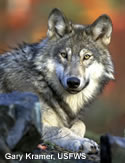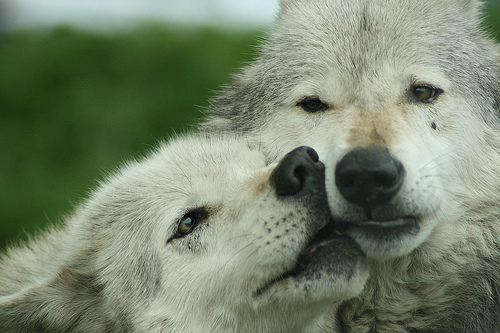We are entering the middle stages of the 6th mass extinction event of the world.
That line certainly grabbed my attention when I read “Trophic Downgrading of Planet Earth” by James Estes, et al. While mass extinctions are a natural phenomenon and are expected to continue, the upcoming 6th is considered different from previous events; scientists believe that 1) humans will be responsible for the next world-wide extinction, and 2) the next extinction will be characterized by the loss of apex consumers (those at the top of the food chain). Why is this of particular interest to carnivore biologists? The loss of important apex consumers results in trophic downgrading. The theory of trophic downgrading suggests that predators ultimately control the health of their ecosystem: remove them, and a habitat’s flora and fauna will eventually fall out of balance and swing wildly from one extreme to the other, often resulting in ecosystem damage.
The downgrading process rests on the premise of another ecological phenomenon called trophic cascading. Cascades are triggered by adding or removing predators from an ecosystem and result in changes to the predator/prey relationships within the food web. The cascade process has been shown in every biome of the world, including highly managed ecosystems like Yellowstone National Park. Studies have shown that the absence and presence of wolves in Yellowstone have had direct effects on the park’s plant and animal processes. During 70 years of wolf absence from Yellowstone National park, a number of deciduous tree species quickly died out, which had a direct effect on soils, beaver and other ecosystem conditions. Without wolves present to maintain their numbers, ungulates essentially overgrazed their environment. Once wolves were reintroduced, ecosystem slowly found rebalance and changed ungulate feeding habits, decline in elk and coyote numbers, and an increase in beaver populations.
While very aware of the challenges ahead and the seemingly desperate state of parts of our biospheres, I am encouraged when I hear about increases in carnivore populations in some western states, like Washington’s recent wolf pack increases and recent Northern Cascade grizzly bear sighting. Perhaps with a little assistance from their human neighbors, these and other important apex consumers can begin to refill their ecosystem niche. If we can begin to accept predators’ necessary role in our ecosystem, we can then be more mindful of responsible and safe co-habitation with the animals upon which, we’re beginning to realize, we and our world greatly depend.
Read more on the Grizzly Bear Outreach Project’s website about how trophic downgrading influences human-caused impacts on nature such as climate change, habitat loss and more. Watch a fun remote camera video showing how many different species (including humans!) utilize one piece of land over the course of one year – a great example of the basis for trophic cascading.



